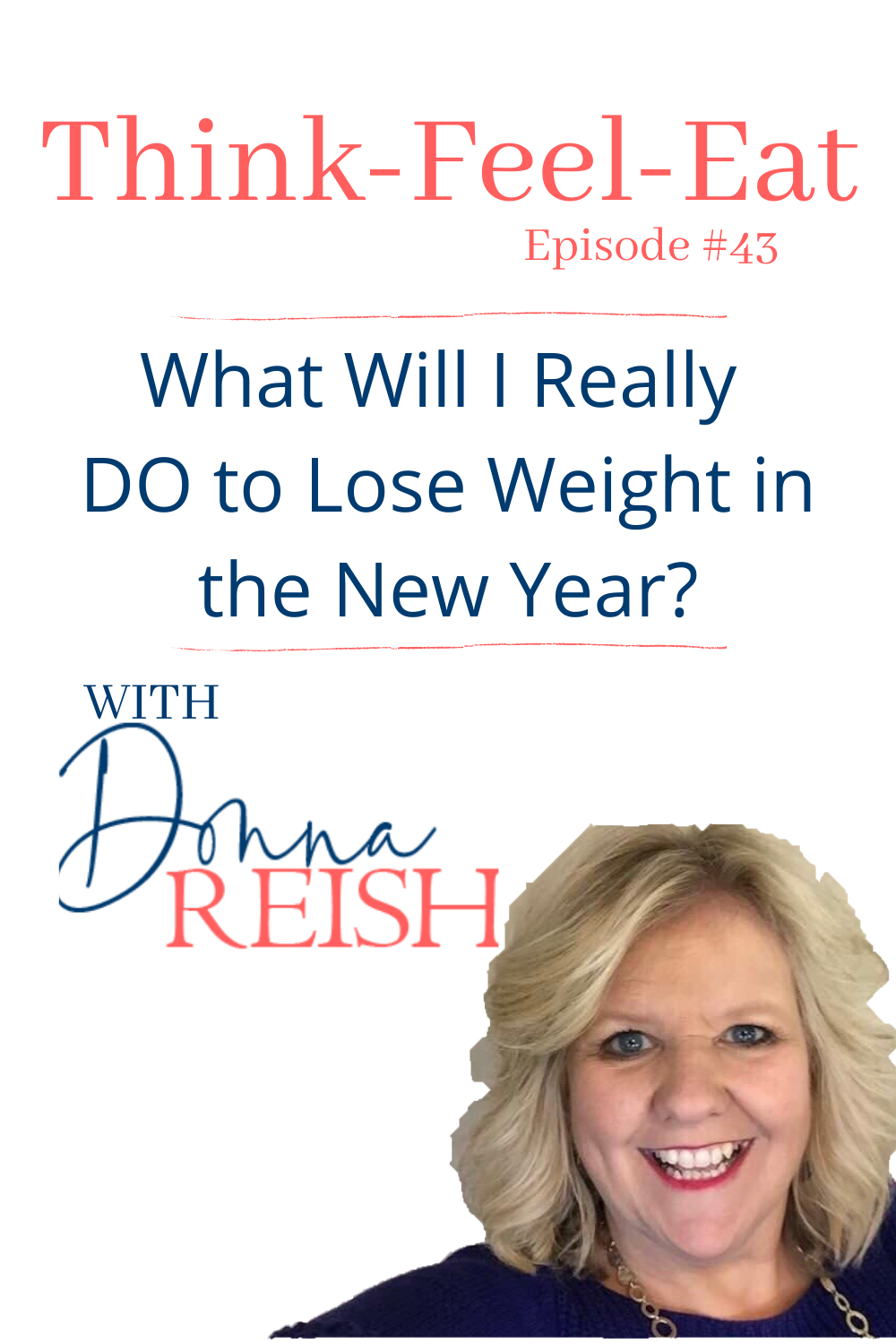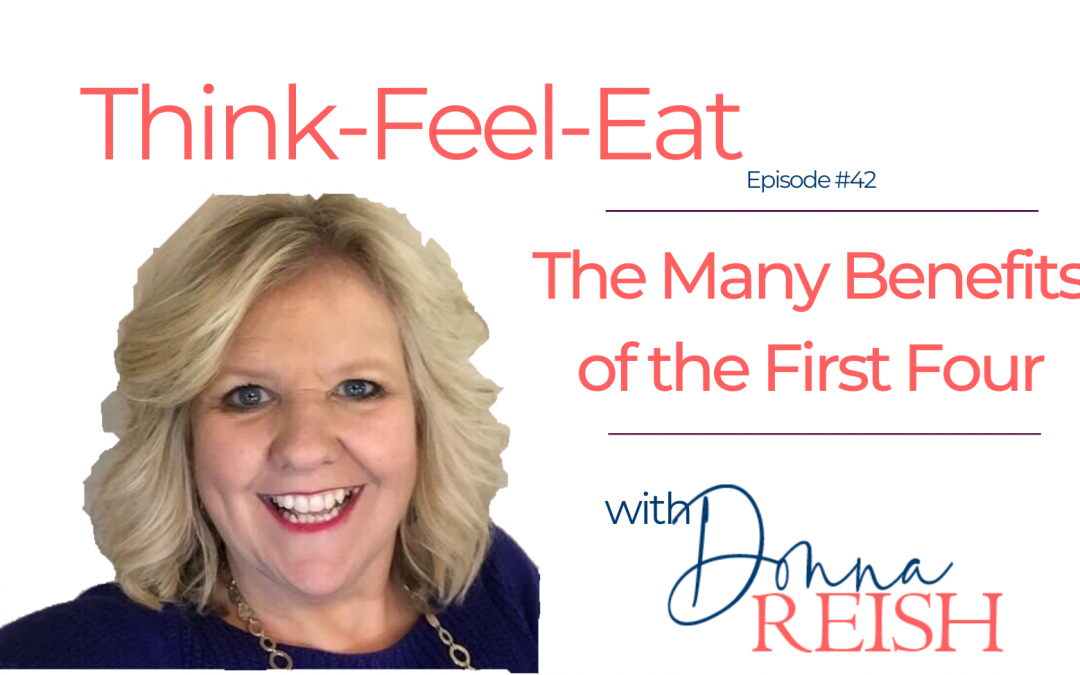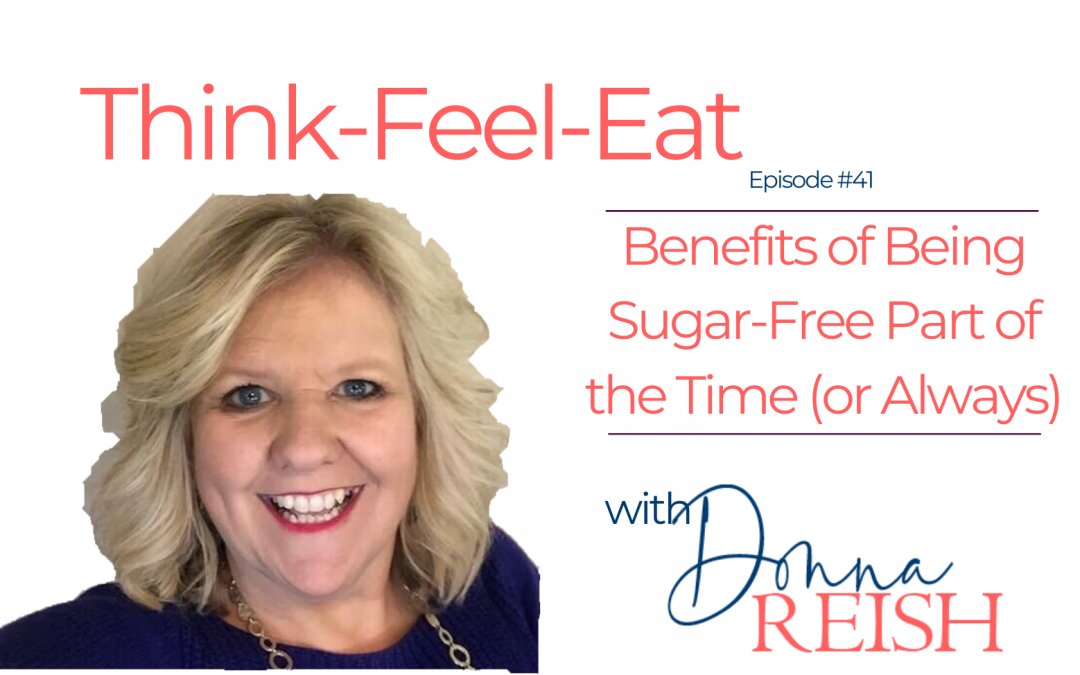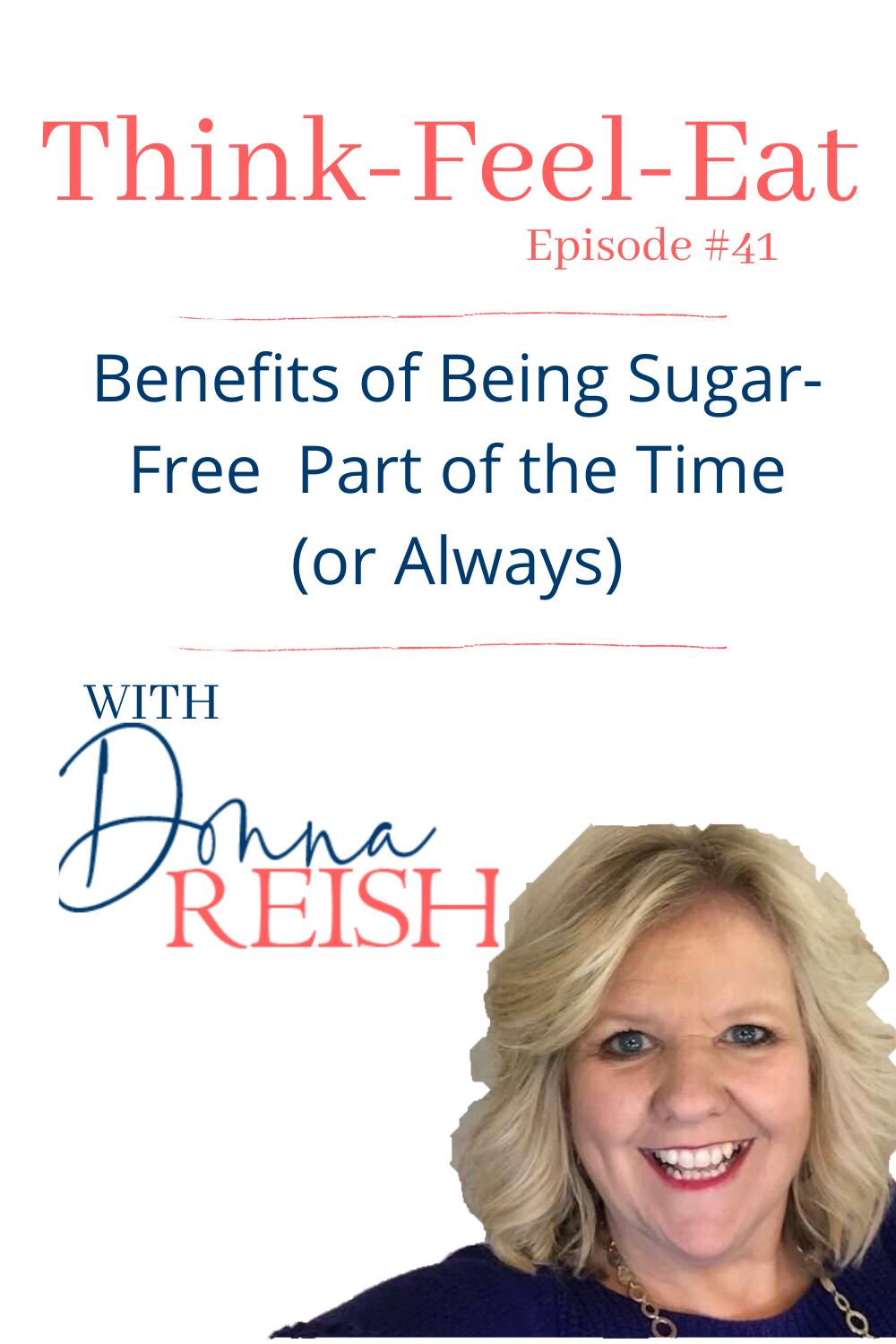
Think-Feel-Eat Episode #43: What Will I Really DO to Lose Weight in the New Year?
Hi! I’m Donna Reish, IF teacher, weight loss coach, blogger, and half of “The Minus 220 Pound Pair” as my husband and I have lost over 220 pounds together (160 of that in the past couple of years through the Weight Loss Lifestyle habits and strategies I teach!).
In this episode, I teaching about new year’s resolutions and goals—and what you will really DO for weight loss/management in the coming year.
We have all heard of SMART goals. We all know that we need specific goals. We need attainable ones, etc.
There are three areas that we are often lacking when it comes to setting goals for a new year. The first one is specificity. Our goals have to be specific right down to the exact actions, times, days, and methods for carrying those out.
Then we need to be sure our goals don’t fall into one of these two pitfalls:
1) Too long of a list that we can’t attain
2) Repeating things that didn’t work for us before
I give many tips and research info about goal setting around those two issues—how we can only attain two to four new goals at once; how we stretch our attention too thin when we have too many; how willpower runs out when we have too many; and much more.
Then I move into learning from our past—what will we really do? What did we not like before? What did we not do before? Why do we think we will do it now?
And finally, I discuss some of my upcoming goals—how I know I will attain them. How they build self-integrity within me because of my constraint in choosing ones I can really do; how I am continuing previously established ones to improve them; and much more!
Think Feel Eat #43 Outline: What Will We Really DO to Lose Weight in the Coming Year?
A. About Resolutions
1. 92% gone by January 23
2. Resolutions are similar to long term weight loss statistics
3. Resolutions aren’t kept first of all because of vagueness—never make a resolution with the word MORE in it.
B. Problems With Resolutions
1. Problem #1: List is too long to do it all
a. We can’t do six or eight or ten new things at once for a long period of time
b. Brain can usually only process two to four new things at once
c. Don’t have the willpower to add so many things at once (Willpower shortage: WLL 60 and 61)
d. Put small emphasis on a many things rather than large emphasis (and willpower, grit, time, energy, motivation, etc.) into just a couple
e. Not congruent with research on habits—habits aren’t formed in mass and with big sweeping movements.
2. Problem #2: We are choosing things that we couldn’t do before, don’t like to do, will probably never do.
a. We need to learn from our past
b. We need to learn about ourselves—what will we really do?
c. We need to create protocols we can stick to—if it didn’t work before, it likely won’t work now.
C. Some Things I Know I CAN and WILL Do
1. Decide Food Ahead of Time (TFE 42)
2. Count my calories using My Fitness Pal
3. Timed eating
4. Water
5. Sleep (Get your First Four Journal Sheets here!)
6. Strength train 60 minutes four times a week
a. This was built incrementally by a 2019 goal of five days a week 20 minutes at low weights
b. Added to in 2020
c. Incrementality!
7. Low impact cardio three times a week for 30 minutes minimum (I want to do more, but this is what I have been doing and I know I can stick with it!)
8. Continue to work on my Sugar Plan (started it eight weeks ago; still creating it and seeing what works for me—not all or nothing, perfect sugar person or nothing!)
D. Get More Help!
1. Join my FREE FB group where I record videocast/podcast episodes!
2. Emails with teaching around weight management—articles, videos, free charts and booklets, and more
3. Take my month-long Intermittent Fasting course
4. Schedule a free 30 minute coaching consult! Coaching packages are on sale now through January 15th, 2021!




























